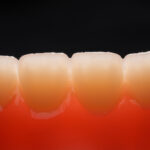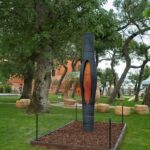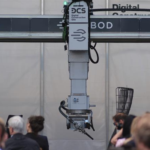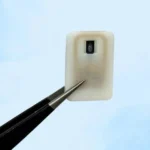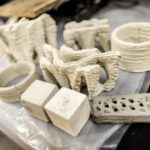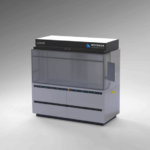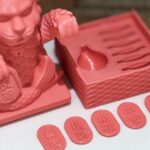As Modix approaches its 10th anniversary in the 3D printing industry, the company is excited to introduce the Modix MAMA-1700 and a new line of 3D printers utilizing Fused Granulate Fabrication (FGF) technology.
This step marks Modix’s entry into Fused Granulate Fabrication (FGF) technology, a significant advancement for the company traditionally known for its FDM (Fused Deposition Modeling) printers. The MAMA-1700 utilizes pellet-based printing, offering enhanced efficiency and cost-effectiveness for large-scale 3D printing projects. This new line of FGF 3D printers is set to enhance efficiency and cost-effectiveness in large-scale 3D printing, offering a versatile solution for industrial applications.

Fused Granulate Fabrication (FGF) Technology
Fused Granulate Fabrication (FGF) technology represents a significant advancement in large-scale 3D printing, allowing the use of pellets instead of filaments. This innovation increases print speed from grams per hour to kilograms per hour, enabling the production of life-size objects in hours rather than days. Additionally, FGF technology reduces printing costs to a few dollars per kilogram and broadens material availability, including recycled materials and high-density filled pellets.
The Modix MAMA-1700, equipped with the Dyze Design Pulsar printhead, leverages this technology to deliver high-speed, cost-effective printing. The Pulsar is a high-flow plastic pellet extruder designed for large-scale additive manufacturing, capable of delivering impressive throughput rates, which significantly enhances production efficiency.
The new MAMA line will include several machine sizes to meet the needs of large industries such as marine and aviation, supporting applications like molds and final products. These printers will be available as self-assembly kits, with local assembly and assistance provided through Modix’s network of 50 specialized resellers worldwide.
MAMA-1700 Specifications
The Modix MAMA-1700, their first model dedicated to FGF technology, is set to be available for pre-order soon. Orders will be collected starting in early July, with production beginning in August and deliveries commencing in Q4-2024.
The specifications:
- – Print Volume: 1.7 x 1.0 x 1.0 metres (XYZ)
- – Printer Dimensions: 2.1 x 1.53 x 2.35 metres (XYZ)
- – Enclosure: Included
- – Print Head: Dyze Design Pulsar, an established and well-supported print head
- – Flow Rate: 500 mm³/s, up to 3 KG/hour
- – Nozzles Included: 3mm & 5mm
- – Material Compatibility: PLA, ABS, TPE, TPU, PVA, HIPS, PC, PET, Nylon, wood, glass fiber, cf filled, and recycled options
- – Pricing: $47,000 USD, with an introductory promotional price of $42,000 USD + shipping
- – Required but Not Included: Air compressor
- – Optional Add-Ons: Air filter, additional nozzles, and more
- – Future Add-Ons: IDEX with pellets or filament
For more information, visit the MAMA-1700 page.
Join Modix at the Rapid Show USA
Modix is excited to announce that they will be attending the Rapid TCT Show USA, BOOTH #2312. Although the new MAMA-1700 was not ready in time for sea shipment, Modix will showcase several new technologies. Attendees can look forward to seeing the new Modix Slicer software tailored for large-scale IDEX 3D printing, the high-speed Ultra print head, and the public debut of their heated chamber add-on, which allows customers to print engineering-grade filaments with their Modix BIG machines.
Mr. Shachar Gafni, CEO of Modix, states, “Modix is making a significant leap forward by introducing this new line of printers, enhancing our technological offerings and competitive position. We anticipate announcing more exciting developments later this year as a result of our dedicated R&D efforts.”
Mr. John Van El, CCO of Modix, adds, “Modix is a trusted long-term B2B partner for many resellers worldwide. We invest in relationships as much as we invest in technology. Today, we are thrilled to lead our partners into new commercial opportunities with the introduction of FGF technology.”
Visit Modix at the Rapid TCT Show to explore these innovations and discuss how they can enhance your 3D printing capabilities.


